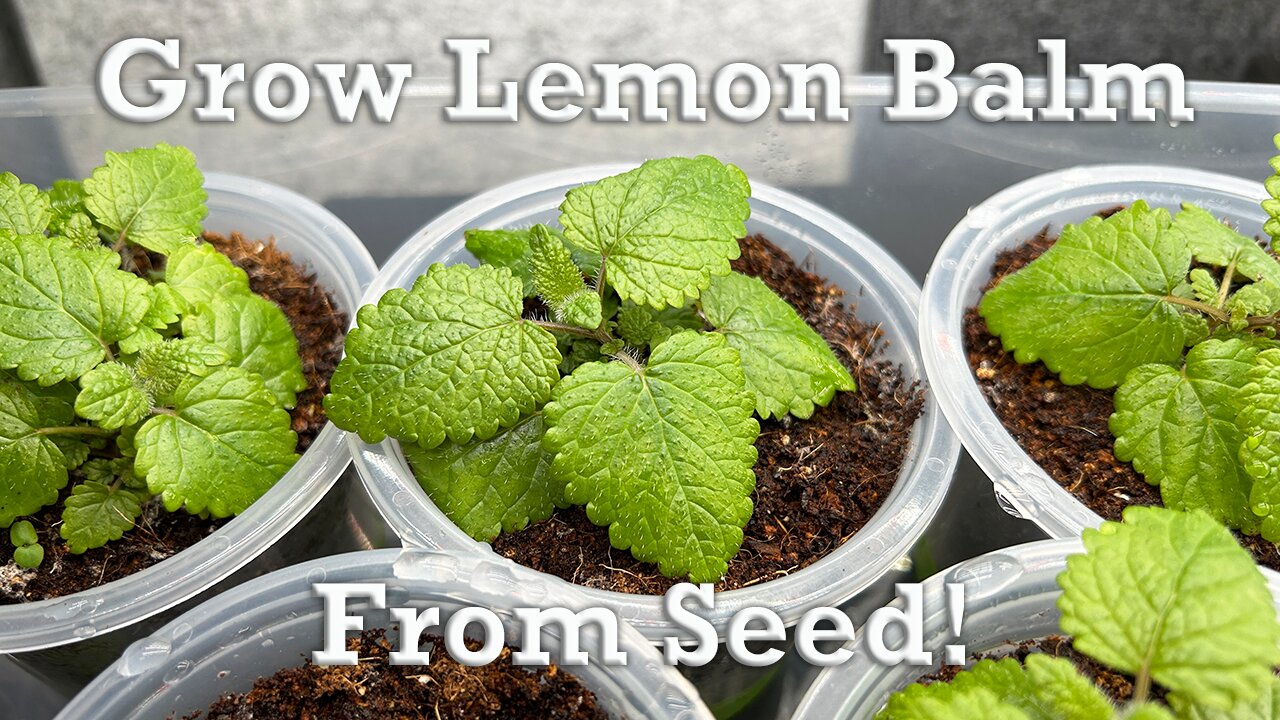Premium Only Content

The Easy Way To Grow Lemon Balm From Seed
In this video, I quickly show you Easy Way To Grow Lemon Balm From Seed using a very small and inexpensive indoor grow light and seed tray setup.
I was able to get these Lemon Balm (Melissa officinalis) seeds to sprout from seeds within about four days of planting in the dirt using the techniques I share in this video.
The links in this description are affiliate links. They give me a small commission on sales, which helps support the channel and keep it independent: https://www.amazon.com/shop/gblyndensrc or visit https://www.gblynden.com.
These are the items I used to sprout this Lemon Balm, with links to purchase them below:
- Organic Lemon Balm Seeds: https://amzn.to/3ToREmn
- Grow Lights (Double These Up For Best Results): https://amzn.to/3I2nAaX
- Burpee SuperSeed Seed Starting Tray 16 XL Cell https://amzn.to/3TiULfz
This seed tray with a humidity dome might even work better: https://amzn.to/3T4Ao74
Here is more information on this plant:
Lemon balm (Melissa officinalis) is a perennial herbaceous plant in the mint family Lamiaceae, and native to south-central Europe, the Mediterranean Basin, Iran, and Central Asia, but now naturalized in the Americas and elsewhere. The second name, officinalis (Latin, 'of the shop'), originates from the use of the herb by apothecaries, who sold herbal remedies directly to their customers.
Lemon balm plants grow bushy and upright to a maximum height of 100 cm (39 in). The heart-shaped leaves are 2–8 centimeters (0.79–3.15 in) long, and have a rough, veined surface. They are soft and hairy with scalloped edges, and have a mild lemon scent. During summer, small white or pale pink flowers appear. The plants live for ten years; the crop plant is replaced after five years to allow the ground to rejuvenate.
Melissa officinalis is native to Europe, central Asia and Iran, but is now naturalized around the world. It grows easily from seed, preferring rich, moist soil.
Lemon balm seeds require light and a minimum temperature of 20 °C (68 °F) to germinate. The plant grows in clumps and spreads vegetatively (a new plant can grow from a fragment of the parent plant), as well as by seed. In mild temperate zones, the plant stems die off at the start of the winter, but shoot up again in spring. Lemon balm grows vigorously.
As of 1992, Hungary, Egypt, and Italy are the major producing countries of lemon balm. The leaves are harvested by hand in June and August in the northern hemisphere, on a day when the weather is dry, to prevent the crop from turning black if damp.
The cultivars of M. officinalis include:
M. officinalis 'Citronella'
M. officinalis 'Lemonella'
M. officinalis 'Quedlinburger'
M. officinalis 'Lime'
M. officinalis 'Mandarina'
M. officinalis 'Variegata'
M. officinalis 'Aurea'
M. officinalis 'Quedlinburger Niederliegende', an improved variety bred for high essential oil content.
#PorchGardening #LemonBalm #Gardening
-
 2:39:37
2:39:37
TimcastIRL
5 hours agoDemocrat LAUNCHES IMPEACHMENT Against Trump Citing Deportation, Abrego Garcia Case | Timcast IRL
142K126 -
 2:17:27
2:17:27
IcyFPS
4 hours agoA new legend rises.. Icy vs Teardrop | @playoffthegrid | Team MERC Grind |
17.3K2 -
 LIVE
LIVE
TwinGatz
5 hours ago🔴LIVE - Endless Jank | Oblivion Remastered
118 watching -
 1:33:55
1:33:55
Glenn Greenwald
11 hours agoGaza Starves, Pro-Israel Propagandists Escalate Extremist Rhetoric and Actions | System Update #444
136K284 -
 LIVE
LIVE
EnDuEnDo
5 hours ago🚨Variety Stream 🎮 Push to 500 Followers 🚀 Chill Vibes 😎
158 watching -
 11:04:48
11:04:48
GrimmHollywood
13 hours ago🔴LIVE • GRIMM HOLLYWOOD • SHADOW OF THE ERDTREE FIRST PLAYTHROUGH • PART 1
67.4K3 -
 1:40:13
1:40:13
megimu32
7 hours agoON THE SUBJECT: This Timeline is Broken: Epstein, Aliens & Summer Anthems
51.5K19 -
 1:02:42
1:02:42
Donald Trump Jr.
12 hours agoMAHA Means Business, Interview with Calley Means | TRIGGERED Ep.237
153K61 -
 1:53:52
1:53:52
Joker Effect
4 hours agoWhy aren't you trying to enjoy yourself? Live a little! https://go.mother.land/joker
39.8K1 -
 LIVE
LIVE
NeoX5
6 hours agoTyping of the Dead | Don't Be Afraid 2 | Rumble Gaming
152 watching